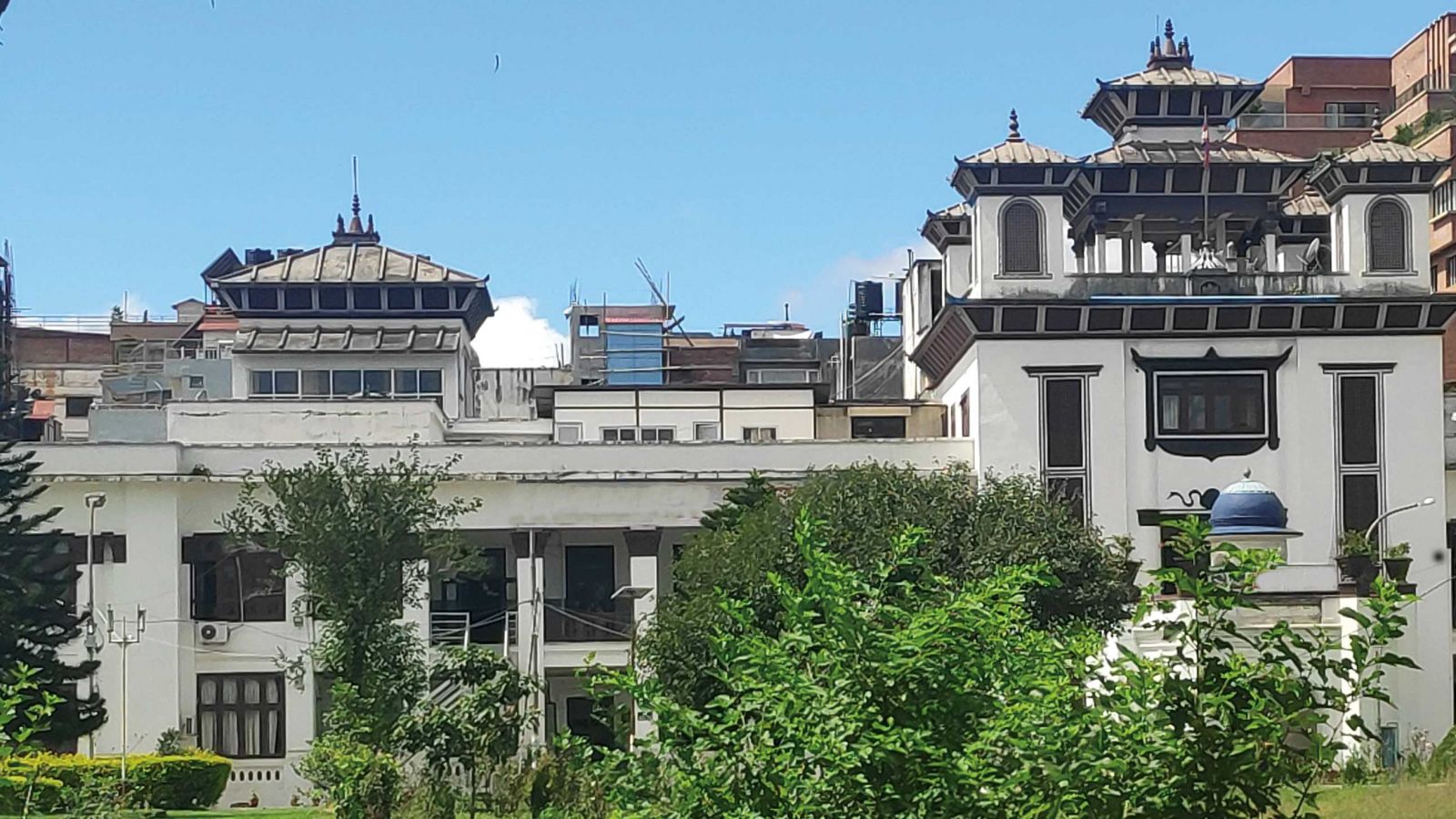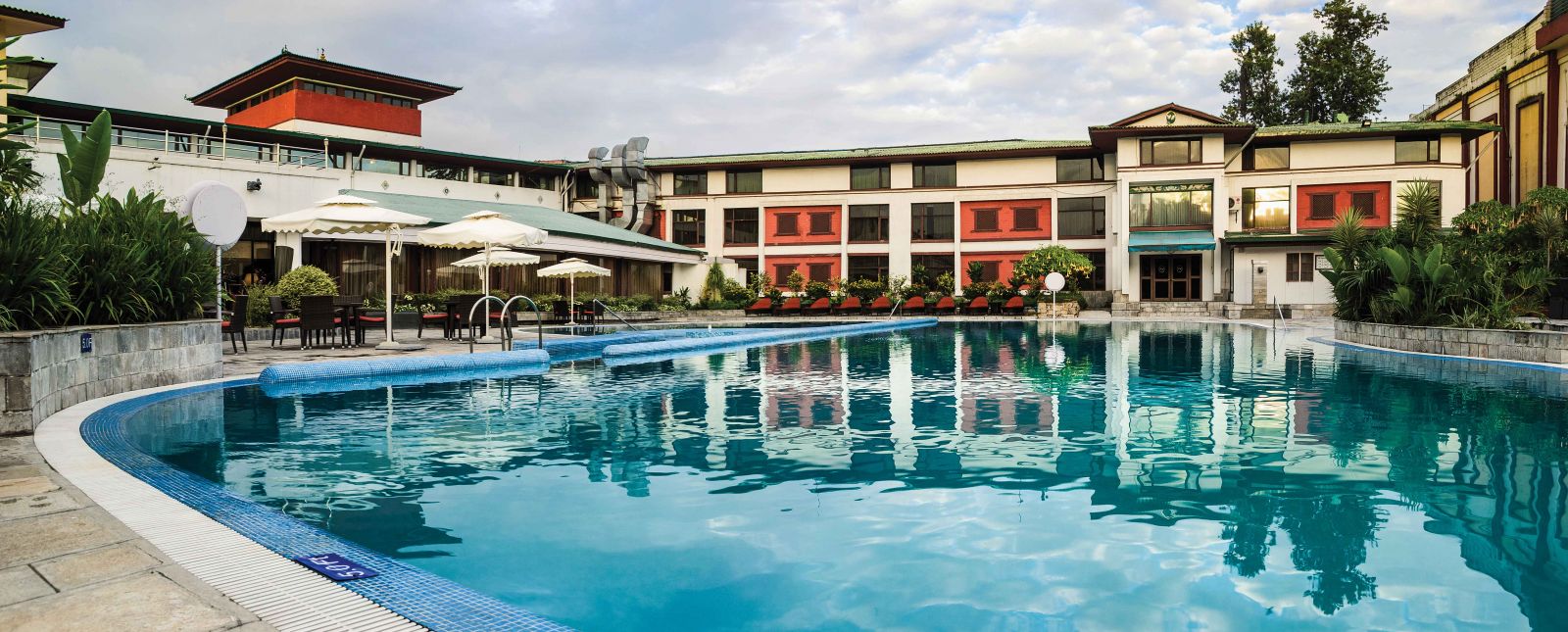During the reign of the Rana Prime Ministers who ruled over the country until 1950, the country was closed off to foreign visitors; even the Everest expeditions approached the mountain from the Tibetan side, starting their long journey from Darjeeling in India and via Sikkim entering Tibet to reach Rongbuk at the foot of Mt. Everest. Only a few lucky scholars and friends of the rulers, besides the British Resident and his entourage, gained entry into Nepal back then. Naturally, there were no hotels catering to tourists.
After the uprising of the people, King Tribhuvan was finally able to regain power and opened up the country to outsiders. It didn’t take long for diplomats, priests, scholars, mountaineers, writers and others to come pouring in. There was a dire need for hotels that could meet the needs of foreigners arriving from developed countries in the west.
Snow View Hotel

Surprisingly, the initiative came from India. The day after they were married in Bombay, Thomas and Elizabeth Mendies arrived in Kathmandu to open a hotel in Lazimpat which was named Hotel Snow View. It was the early 1950s. Snow View was a cozy two storied house mostly constructed out of wood; the staircases, the floors and ceilings—all were made of wood. But soon their limited number of rooms proved inadequate to house the growing number of guests arriving. With no other option, some were made to sleep out in tents on the lawn. The Mendies couple later established the famous orphanage called Mendies Haven which is now in Dhapakhel and still operates to this day, and closed down their hotel. In the late 1990s, a group of friends, including Mani Lama and Manjushree Thapa, took over the building that once housed the Snow View Hotel and turned it into an art gallery called ‘Gallery 9;’ a manual color photo processing lab was established on the ground floor and an electronics repair workshop next door to it. It was only recently that the place was demolished; the compound is now full of concrete buildings.
Royal Hotel

Then in 1953, the most flamboyant foreigner Nepal had ever seen arrived on King Tribhuvan’s private plane. It was a Russian who had escaped persecution in his home country and had been living in India running the famous Club 300. It was there that King Tribhuvan met Boris Lissanevitch and used his apartment as a meeting place to plot against the Rana regime. Having befriended the Russian, the King thought he’d return the favor by inviting him to come and live in Nepal. With connections in high places, Boris was soon able to lease an old palace and start a big hotel for tourists in Kanti Path, naming it ‘Royal Hotel.’ The hotel not only attracted tourists but soon became the watering hole for all the expats, diplomats, aid workers, writers and mountaineers like Edmund Hillary and priests like Father Moran. The main attraction was Boris himself who was a great recantuer besides being an entrepreneur, ballet dancer and hunter. In his hotel he’d opened the Yak & Yeti Bar where he told his colorful stories. The hotel would later host the foreign dignitaries who came to attend King Birendra’s coronation in 1975.
It is said that it was Boris who convinced the young King Mahendra to allow tourists to come to Nepal. At first skeptical that people from the west would want to come to a poor country like Nepal rather than visit Paris, London, Rome, New York and all the other spectacular cities around the world, the king eventually relented. Boris managed to arrange the first group of tourists through a travel company. The tour was a resounding success as not only did the guests admire the art and architecture they saw around Kathmandu, they also bought plenty of Nepali handicrafts from the curio shop run by Boris’ mother-in-law at the Royal. From then on getting visas was made easier.
Hotel Soaltee
Boris had kick-started tourism in Nepal and by the 1960s Nepali entrepreneurs began establishing starred hotels. Hotel Soaltee, the first five-star hotel of Nepal, was founded in 1965 and inaugurated by King Mahendra in 1966 at Tahachal. Spread over 12 acres of land, this is the pioneering luxury hotel that brought class to the Nepali hotel industry. It started with 104 rooms which has now gone up to 282 luxury rooms with seven regal VVIP suites. The hotel traditionally hired bands from India and Sri Lanka until the late 1970s. It was known for good food and was one of the few places to go for entertainment in the early 1980s. When the first SARRC convention was held in Nepal, the delegates were housed in Soaltee’s new wing especially built for VVIPs. The hotel has hosted most of the celebrities who’ve visited from the west and one of their recent guests was Bryan Adams when he came to perform at the Dasharath Rangashala (National Stadium).
Hotel Annapurna

Hotel Annapurna was built not far from the Narayanhiti Palace in Durbar Marg. Established in 1965, it spread over 5.5 acres and was later up upgraded to a five star hotel. It has a very fine Indian restaurant called Ghar-e-kabab and a coffee shop just off the main road. Both Soaltee and Annapurna were opened with investment from royalty. Princess Helen Shah, wife of Prince Basudhara owned the hotel along with the resort ‘Fishtail Lodge’ in Pokhara. For some time, Annapurna was managed by the Indian chain Taj hotels; today it is back in Nepali hands.
Hotel Shankar

At the end of the 19th century, Gen. Jit Shumsher Rana, brother of HH Sri Tin Maharaja Bhir Shumsher Jung Bahadur Rana, hired architect Kumar Narsingh Rana to build a spectacular palace in Kathmandu. Much of the items required such as gilt mirrors, velvet, marble and sunburst chandeliers were all shipped from Europe. The exteriors were fashioned in neo-classical style and the construction completed in 1894 AD.
Gen. Jit Shumsher died in 1913, and this palace eventually came into the possession of Gen. Maharaj Kumar Agni Shumsher Jung Bahadur Rana - the son of HH Sri Tin Maharaja Juddha Shumsher Jung Bahadur Rana, one of the powerful Rana Maharajas. Back in 1964, the palace was converted into a luxury hotel and named Hotel Shankar. The interiors were redone to suit the needs of guests but it remains one of the most opulent hotels in Nepal.
There are now more hotels in the city than one can count, with more springing up every day. This has been just a little wander down memory lane, remembering some of the first, how they came to be and opened the door for all that were to follow.
Some lesser-known vegetable dishes from the southern plains
I’m not a vegetarian but I love vegetables. And whenever I get to the southern plains of Nepal, I try...








